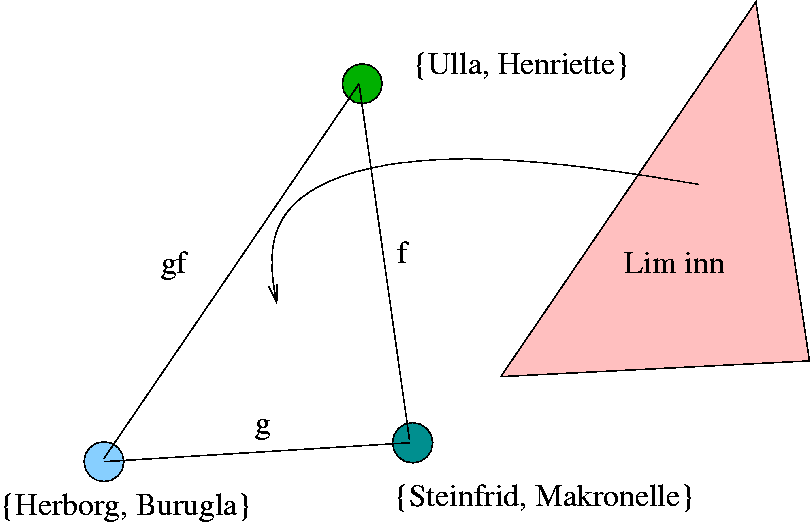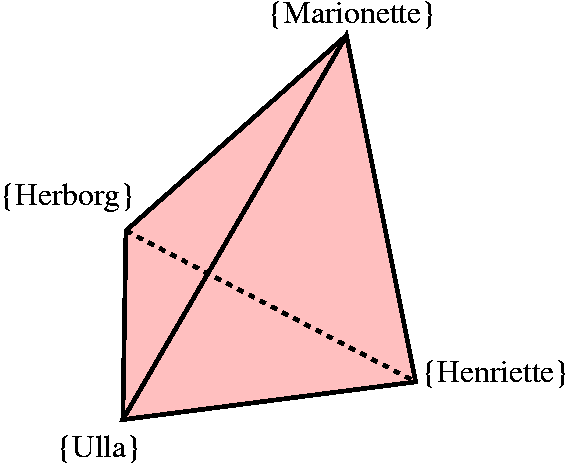
Think about the natural number as the (incredibly dull) discrete space, with one point for each natural numbers
It doesn't get more exciting when we add the negative numbers to get the integers.
What about when we talk about sets? Here it is vital to remember that we have functions. We may map
We see that this function represent an exchange, which is a legitimate process when trading in sheep. The sets
To keep track of all these sets, I draw a vertex for each set and for each isomorphism I draw a curve (or "one-simplex", if you're so inclined). Perhaps you'd like the isomorphism representing equality to have zero length.
What happens if I compose two isomorphisms? I need to keep track of more complicated trading situations. For instance, there are two ways to run around the the triangle below from {Ulla, Henriette} to {Herborg, Burugla}.

One way is to do the two isomorphisms one after another, and the other is to take the composite gf in one go. These two ways should be identified, and we make this identification by gluing in a triangle (so that there is no hole: you can slide continuously from one to the other). If we have more complicated trading situations we deal with these in the same manner by inserting simplices to fill "fictional" hole.
 So, the collection of all finite sets can be viewed as a spaces
So, the collection of all finite sets can be viewed as a spaces
For instance, the component containing the empty set has exactly one point: namely the empty set.
The component that contains {Ulla} contains all one point sets - e.g., {Henriette} and {Marionette}, but also {Herborg}.
That all sheep are created equal (we hold this truth to be self-evident) is reflected through the fact that all these one-point sets are isomorphic, but more is true: there is exactly one isomorphism between any two given one point sets, so this component is contractible! (the tetrahedron to the right shows is a part of this component)
One component contains {Ulla, Henriette} (and thus all sets with two elements), another contains {Ulla, Henriette, Steinfrid} and so on.